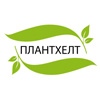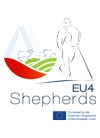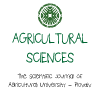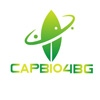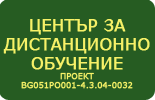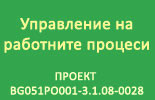Cereal and legume crops
|
Course title: |
Cereal and legume crops |
|
|
Course code: |
AFCLC |
|
|
ECTS: |
5 |
|
|
In-class hours |
Lectures: |
30 |
|
Laboratory work/Tutorials: |
30 |
|
|
Self-preparation hours |
Practical training: |
15 |
|
Other: |
50 |
|
|
Total hours: |
125 |
|
|
Language: |
English |
|
|
Study cycle: |
BSc, MSc, PhD |
|
|
Semester: |
Winter & summer |
|
|
Faculty: |
Faculty of Agronomy |
|
|
Name of the lecturer(s): |
Prof. Hristofor Kirchev, PhD |
|
|
Mode of delivery: |
Face-to-face, distance learning, a combination of both |
|
|
Prerequisites: |
Botany, Plant physiology, Soil science and agrochemistry, Phytopathology, Entomology |
|
|
Learning outcomes of the course unit: |
The course “Cereal and legume crops” provides biology, taxonomy and varieties introduction. There are presented the technology elements of major grain and legume crops cultivation. The course includes lectures, laboratory work and practices. |
|
|
Course contents: |
I. LECTURES – 30 hours (15 x 2 hours) 1. Cereal grain crops – history, utilization and distribution. Grain crops classification. 2. Wheat. Phenology and biological characteristics. Agro-technology. 3. Rye. Phenology and biological characteristics. Agro-technology. 4. Triticale. Phenology and biological characteristics. Agro-technology. 5. Barley. Phenology and biological characteristics. Agro-technology. 6. Oat. Phenology and biological characteristics. Agro-technology. 7. Maize. Phenology and biological characteristics. Agro-technology. 8. Rice. Phenology and biological characteristics. Agro-technology. 9. Sorghum. Phenology and biological characteristics. Agro-technology. 10. Millet. Phenology and biological characteristics. Agro-technology. 11. Legume crops – history, utilization and distribution. 12. Bean. Phenology and biological characteristics. Agro-technology. 13. Soybean. Phenology and biological characteristics. Agro-technology. 14. Pea and Chickpea. Phenology and biological characteristics, Agro-technology. 15. Lentil and Faba bean. Phenology and biological characteristics. Agro-technology.
II. PRACTICAL TRAINING – 30 hours (15 x 2 hours) 1. Cereal grain crops – general morphology. 2. Winter wheat – morphology and taxonomy 3. Winter wheat – types and varieties 4. Durum wheat – morphology, taxonomy and varieties 5. Rye, triticale and oat – morphology, taxonomy and varieties 6. Barley – morphology, taxonomy and varieties 7. Maize – morphology, taxonomy and varieties 8. Rice – morphology, taxonomy and varieties 9. Sorghum and millet – morphology, taxonomy and varieties 10. Legume crops – general morphology. 11. Soybean - morphology, taxonomy and varieties 12. Bean - morphology, taxonomy and varieties 13. Chickpea - morphology, taxonomy and varieties 14. Pea - morphology, taxonomy and varieties 15. Lentil and Faba bean - morphology, taxonomy and varieties |
|
|
Recommended or required reading: |
1.http://faostat.fao.org/site/567/default.aspx#ancor 2. https://www.crops.org/publications/cs 3. https://www.agronomy.org/publications/aj 4. Belderok, Bob & Hans Mesdag & Dingena A. Donner. (2000) Bread-Making Quality of Wheat. Springer. p.3. ISBN 0-7923-6383-3. 5. Smith, Albert E. (1995) Handbook of Weed Management Systems. Marcel Dekker. p. 411. ISBN 0-8247-9547-4. 6. Hancock, James F. (2004) Plant Evolution and the Origin of Crop Species. CABI Publishing. ISBN 0-85199-685-X. 7. Bajaj, Y. P. S. (1990) Wheat. Springer. pp. 161-63. ISBN 3-540-51809-6. 8. Bonjean, A.P., and W.J. Angus (editors). The World Wheat Book: a history of wheat breeding. Lavoisier Publ., Paris. 1131 pp. (2001). ISBN 2-7430-0402-9 9. J. Dobraszczyk, Bogdan (2001). Cereals and cereal products: chemistry and technology. Gaithersburg, Md.: Aspen Publishers. p. 7. ISBN 0-8342-1767-8. 10. Sorghum and millets in human nutrition. (FAO Food and Nutrition Series, No. 27) ISBN 92-5-103381-1 11. Daniel Zohary and Maria Hopf, Domestication of plants in the Old World, third edition (Oxford: University Press, 2000), p. 75 12. Smartt J. 1990. Grain legumes: Evolution and genetic resources. pp.327 ISBN 0-521-30797 |
|
|
Planned learning activities and teaching methods: |
Lectures, presentations, briefing, tutorials Dialogue methods (conversation, discussion, brainstorming) |
|
|
Assessment methods and criteria: |
The lectures, laboratory work and practical training will be held in the 4 laboratories, experimental field and the demonstration field at the Crop Science Department at the Agricultural University of Plovdiv, Bulgaria and aromatic oil distilleries in Plovdiv region. The students are working individually under the lecturer's supervision. The final grade consists of: • Theory exam (test and discussion). (Origin, distribution, importance. Phenology and biological characteristics. Agrotechnology) – 60% . • Practical exam (discussion). (Determination of the species and varieties by their morphological specifics) – 20%. • Presentation of an individual project about Aromatic, medical and spice plants and technology. – 20%. |
|
 - Събития по случай 80-я юбилей на АУ
- Събития по случай 80-я юбилей на АУ
